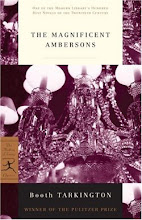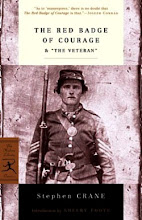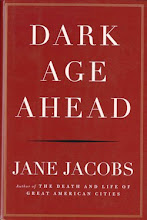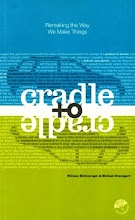
Personal commitment to ideology or principals can manifest itself in unusual ways. I have always been interested in conservation, although my lifestyle has not always followed a strict expression of this ideal. I tend to pick the ideals I wish to express on how convenient they are at the time. Humans tend to be lax on issues that require personal sacrifice. “I’ve done my share let someone else finish saving the world”.
Somewhere along the way I decided to express my commitment to preservation in the car I drove. I did not take the simple solution which would be to go out and purchase a hybrid vehicle. This solution yields little personal sacrifice. My badge of honor required pain and suffering. Purchasing a new hybrid vehicle only contributed to the consumer economy and it places one more vehicle in the junkyard.
I decided to extend the life of the vehicles I owned. I would purchase a vehicle with just over 100,000 miles on the odometer and drive them into the ground, which would occur around 200,000 miles. At the point where the vehicle was a total loss, it would be cannibalized for parts for the next aging car I would purchase. This concept of conservation extended not only the life of individual vehicles it extended the life of every part of the vehicle. My unique approach to conservation required the adherence of two important principals. In order to maximize the efficient reuse of parts, I must continue to purchase vehicles of the same model and production year. Secondly, an individual must have sufficient mechanical skills to successfully place salvaged parts on another vehicle with sufficient competency so that one’s life would not constantly be in danger. I was much less successful at developing the necessary mechanical skills than I was at purchasing a consistent model year. My lack of mechanical skills fulfilled my pain and suffering requirement many times over.
A self anointed shade tree mechanic and gregarious friend of mine was a European road rally car fan. Klaus was smuggled out of East Germany at the age of five. He was tall, energetic and a supremely confident individual with a loud booming voice and laugh that was infectious. His long muscular arms were trained like a contortionist to twist like pretzels reaching deeply into engine compartment to blindly unscrew the smallest of bolts. While buried in the bowels of an engine his jet black mop of curly hair would flop around and clean the grime from the compartment like a duster. Klaus lived for Saturday to rip into another engine.
Klaus was firmly convinced that his German heritage endowed him with all the mechanical and engineering knowledge of the entire German people. This was not entirely true, I found out later. He would remove a part and study it intensely until the mechanical essence of the part would revel itself to him. If a part’s function would elude him, after a few hours of intense scrutiny he would summarily dismiss the part as being non-essential and toss it away. Once it was determined the vehicle would run without a particular part, Klaus would never change his opinion about the uselessness of the part. All classified nonessential parts would be automatically removed from all future vehicles. Over the course of time Klaus identified dozens of nonessential parts which would pile up in the corner of the garage.
After much discussion, Klaus convinced me that the vehicle I was destined to be conserved was the 1978 Saab 99 Turbo. The vehicle had an impressive racing record in Europe. It was wide and low and the suspension gave it handling that was very good for the time. The chassis was also designed for safety. What convinced Klaus was in 1978 the first turbocharged version of the car was introduced. The engine was a four-cylinder in-line turbocharged engine that was tilted at 45 degrees, basically half of a V8 which produced 87 hp at 5500 rpm. Previously a bit of a dog, the addition of the turbocharger resulted in an impressive speed boost for the lightweight vehicle. As the rumors went, the turbocharged engine was designed for the new larger and heavier Saab 900. Unfortunately in 1978 the new Saab 900 body was not complete, so the engine was installed in the Saab 99. While in production Saab discovered that the power of the turbocharger over extended the top end performance of the engine past safe design limits. To correct the problem, Saab installed an electronic governor on the engine in 1979 to limit the explosive top end performance. Klaus often stated “It was an oversized engine stuffed into a small coupe which made it run like a striped ape”. I never disagreed with him. It was a street legal race car.
For over a decade Klaus and I cornered the 1978 Saab 99 Turbo market in the Midwest. We were known for hundreds of miles as the consumers of these aging vehicles. Saab dealers knew us personally and we would be the first one called when a turbo was traded in. Eventually we knew of every 1978 Saab 99 Turbo within two hundred miles whether or not you had any interest in selling it. During my tenure as president of the Saab 99 Turbo conservation movement I owned at least six of these cars. We understood the personality of the car like nobody else. I could tell you what part would break next based purely on the odometer reading. Do not assume this means we obtained the status of master Saab mechanic. Saab was a company that also built jet engines in Sweden. Many unique tools were required for the proper installation of many parts. Klaus never believed a part should ever require a special tool, so we usually did with out the special tool and opted for the mind numbing process of conducting precision mechanical surgery on the car with nothing but the most primitive Sears 99-piece tool kit.
One of the most consistent problems with the first Saab turbo was that the turbo would get almost white hot when the engine was raced hard. Improper warm up or cool down procedures would immediately warp the turbo o-rings requiring a complete rebuilt. We had so many turbos rebuilt that we became close friends with the local rebuild shop. They got past the point of charging us if we stopped by with our own rebuild kit. We would buy turbo rebuild kits by the dozen. To the turbo shop we were a form of weekly entertainment.
One Sunday just as it was turning dark, we just finished replacing some broken parts with salvaged parts from the accumulated warehouse of parts in our garage. The next morning I had an extensive multiple city business trip. The three city airline booking was a non-refundable airfare which cost over a thousand dollars. Rebooking this trip would cost at least five hundred dollars. As is typical with all my travel, I started for the airport late. The thirty five mile drive to the airport is the longest journey in the world especially when you are going to miss a plane. The Saab 99 turbo was perfectly suited for this type of hyper travel.
Each trip was an exercise in avoiding the speed traps placed along my route. Having been stopped at all the possible locations numerous times to be issued speeding tickets, I was relatively confident I knew where to slow down. About halfway into my road rally time trail to the airport, I noticed the temperature gauge beginning to rise into the red. Klaus had trained me well in the art of shade tree mechanics. With a Germanic precision I began to consider all of the factors which would lead to an engine meltdown. My primary focus was the work complete the night before. I didn’t recall Klaus finding any new nonessential parts to be tossed aside. As I retraced each activity of the night before nothing was out of the usual.
I briefly considered stopping to open the hood to take a look, but dismissed the idea after glancing at my watch. I could not afford the five hundred dollars it would cost to miss the flight. I came to the conclusion what I had plenty of spare parts to correct the condition. Passing the three quarter mark of my journey, I was surprised to see the needle on the temperature gauge had graduated past the marks indicating temperature. The needle had pushed so far past the temperature gauge that I now had two needles on my battery gauge. I thought to myself, “I bet Klaus doesn’t even know that a Saab can do that”.
Considering the list of options available I decided to speed up and get the car to the airport as quickly as possible. When Saab decided to place such a large engine in such a small compartment, they created a cooling problem. The small front grill area was not large enough to allow sufficient air past the radiator to cool the excessively hot turbo. Saab’s solution was to install two high powered fans to suck three times the amount of air past the grill to cool the engine. As I considered the engineering comprises required to make this combination of engine and chassis work, I recalled the image of the fan wires dangling unplugged as the hood was shut last night. This solved the riddle of the overheating engine. I knew from past experience that the engine would need to cool for hours before anyone could reach in and reconnect the fan wires. I didn’t have the time to pull over on the shoulder.
I pushed to car to the explosive top end which Saab was in the process of correcting, when I hear a clear pop of a potato gun that had just hurled a spud a couple hundred yards. I immediately focused on the operation of the vehicle. There did not appear to be a loss of power. The turbo was still whirling with a high pitched whine. All spark plugs were firing in order. The engine seemed to be running fine. I began to relax and dismiss the sound as road debris hitting the undercarriage of the car, when something caught the corner of my eye. It was a brief flash of sunlight in the rear view mirror. As I looked into the mirror I noticed there was no car behind me for as far as the eye could see. At closer inspection there was a handful of small round metal parts spinning like tops about 100 feet behind me.
Six to eight obvious engine parts danced on the pavement reflecting sunlight as they spun. The image of the parts shrank and disappeared quickly at the car sped away from the spot. Having just solved one mechanical mystery I began to solve the newest puzzle. Where did those parts spinning on the ground come from? I decided to begin to match the shape of the spinning parts against my extensive parts inventory at home. Again I turned my attention to the operation of the vehicle. Everything seemed to be functioning. No usual sounds? No new vibrations? Using Klaus’ mechanical skills I dismissed the parts as nonessential. Looking back at the dash, the temperature gauge had now circled 270 degree and the temperature needle registered just below cool having knocked off the battery needle along the way. I made a metal note to myself to ask Klaus if he had any spare needles for a battery gauge when I got back.
As the journey pushed forward toward the airport a brilliant white smoke began to trail from the speeding vehicle. I laughed to myself that mechanical riddle number three was much too easy to solve. With the radiator fans unplugged the cooling system was overheating which produced the white smoke as it spewed from the radiator. The car now resembled a rocket as the smoke dissipated into one long thin plume reaching a half of mile in length. I can ride this out. I’m not far from the airport. I was only two miles from the airport when the smoke turned from white to black. Mechanical mystery number four was confusing me. I had no idea what it could be. Black smoke is oil or fuel. White is water and antifreeze. My problem was white smoke. How could the smoke immediately shift from white to black? These were two independent mechanical systems. A conflagration of two systems would result in the mixing of white and black creating grey smoke. I did not understand how the smoke could change colors.
Approaching the airport, there was not enough time to catch the airport shuttle, so I decided to park at one of the small gas stations next to the airport property. Still wrestling mystery number four, I pulled off the interstate onto an exit ramp. At the top of the ramp was a stop sign and to the left one short block was the gas station. As I stopped at the stop sign the paint on top of my hood bubbled like an egg in a hot skillet. I was amazed how rapidly my hood was bubbling. It didn’t take a German rocket scientist to conclude the car was on fire! There wasn’t much comfort in the fact that I solved mystery number four at this point in time. About half the parts under the hood of the car are plastic and plastic burns with a thick black smoke especially when fanned with one hundred mile per hour winds.
While staring at the hood standing still at the ramp intersection, small blue flames popped out from under the grill to look at me. If the flames had a camera to take a photo of me peering through the windshield I’m sure it would have won every photo contest in the world. At my first introduction to the fire, I panicked and decided to drive the burning car to the gas station to put the flames out. I considered this the appropriate conservation solution, maximize the life cycle of the parts that were not quite yet on fire. It’s truly amazing how slow time passes when you are driving a burning car.
In the eternity it took me to travel that one block from the stop sign to the gas station I developed, evaluated and prioritized at least twenty separate plans for exiting the car. Out of habit or maybe because I was in shock I pulled my burning Saab 99 Turbo right up to the gas pump like I need something flammable to be close to. The gas station attendant saw me driving up the street and assumed from the smoke streaming from behind my car that my car was overheated. It this it was the understatement of the year. Apparently the attendant was unaware of the difference between white smoke and black smoke. Casually he shuffled out of the open service station door smiling at the prospect of selling me two gallons of the outrageously overpriced antifreeze.
As the car rolled slowly up to the gas pump I grabbed my luggage and hurled it though the open sunroof. A flood of adrenalin allowed me to rocket the luggage from the car like an ejection seat on an F-18 fighter jet. My luggage made a beautiful arch which reached a height of about ten feet and then landed about twenty feet from the smoking vehicle. Startled by never having seen anyone remove their luggage from a moving vehicle in such a fashion, the attendance began to approach the car laughing. “Looks like you need some water for that car buddy.”
I was a little distracted for small talk with the attendance as I threw open the car door and dove for the ground. Like a dog that is running at full speed when they arrive at the end of the leash, I was about three feet from the car when the seatbelt snapped me back into the car. Strangely none of my twenty plans included unbuckling my seatbelt before exiting the car in panic. I made another mental note to myself seatbelts are useless in a burning vehicle. Quickly I removed my seatbelt and dove again for the ground, easily clearing the pump island and I rolled toward the attendant who was beginning to wonder what type of fruitcake had made an appearance at his station.
In the process of ejecting myself from the car I managed to pull the hood release level which allowed the hood to pop open revealing a nuclear fireball of flame which stretched to the canopy of the pump island. The attendant let out a girlish squeal. It was the type of sound that would ruin your life as a kid if anyone else heard it. It was a sound that you would have to deny forever. A sound that could get you tagged for life with a nickname like “Squiggles” or “Chicken”. Upon hearing the attendant’s cry I thought “Whee what a pussy” as he broking into a dead run for the building. I turn my attention back to the burning car and began to realize the poor decision I made parking the car next to the gas pumps. I let out my own girlish squeal which I continue to deny to this day and headed for the building to see what the attendance was doing.
I was knocked aside as the attendant rocketed out of the gas station with a huge fire extinguisher and began covering the car with a thick blanket of white foam. In a few short seconds the car was transformed was a raging Texas A&M bonfire to a smoldering and hissing pile of parts. With the disaster averted the attendant looked at me with one of those “I’m going to kill this idiot” looks, as I began to collect luggage. I decided I should try to connect with the guy. I walked over and said “Thanks dude, I really needed some help and didn’t know where else to go.” He replied “I wouldn’t suggest driving a burning car up to a gas pump” As I tossed the luggage over my shoulder, I smiled “Yeah next time I’m cruising around in a burning vehicle I’ll remember that.” As I started toward the shuttle bus, the attendant asked “What should I do with the car?” “Just tow it around back and park it. I’ll be back in a week.”
A week later I returned to the gas station to survey to damage and concluded that this particular vehicle would be retired, but there were still some parts that could live on. Asked the attendance for the bill and was shocked to see a line item of $450 for one fire extinguisher. I looked up at him and said “Dude, I never authorized you to use the fire extinguisher on the car. I think you took it upon yourself to use that extinguisher. I’m not paying for that.” Without missing a beat he replied “Yeah your right that’s a mistake that shouldn’t be for the fire extinguisher that $450 charge is for the 25 foot tow you asked for before leaving”. You know he was right, I couldn’t argue. I paid the bill and proceed to call to have the car towed back to the house for salvage.

























































